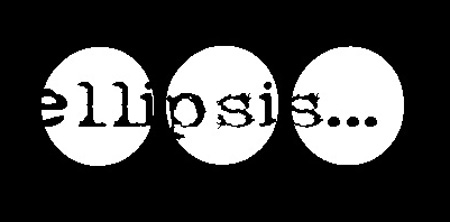An ELLIPSIS is a punctuation mark with basically one function: it signals to the reader that the writer has left something out. The ellipsis indicates an intentional omission of a word, sentence, or whole section from a text without altering its original meaning.
For example, Longfellow wrote,
“Listen, my children, and you shall hear,
Of the midnight ride of Paul Revere . . .
Who remembers that famous day and year.”
For those of you who memorized part of that poem in childhood, you know that the section omitted from the stanza is “On the eighteenth of April, in Seventy-Five: Hardly a man is now alive.” Here, using the ellipsis helped to shorten the passage.
Traditionally, an ellipsis looks like this: [ . . . ] It is a series of three periods (only three!), with a space both preceding and following them, as well as spaces between the periods comprising the ellipsis. Nowadays, however, most people just type an ellipsis without the extra spaces, like this: […]. It is worth noting that even style guides differ on how to write an ellipsis. For instance, the AP style guide puts them all together (presumably to save space), while the Chicago Manual of Style spaces them out. But in both instances, there is a space before and after the series of periods. There is rationale for at least those surrounding spaces. Without them, an ellipsis will be considered joined to the words before and after it by most computer systems. This creates a problem especially if you get to the end of a line; having a space before and after breaks up the words properly so you don’t have one giant word mess. At the very least, if you are supposed to be following a particular style guide, check to see how you should form the ellipsis. If not, pick a format and stick to it throughout your writing.
“Aposiopesis” (apəˌsīəˈpēsis) is speech that is broken off and left unfinished. To indicate this, a writer often uses an ellipsis to show the trailing off into silence, indicate a unfinished thought, or whatnot. For example: “But I thought he was . . .” Thus, the ellipsis here fulfills its function of signaling to the reader that the writer has left something out.
The plural form of ellipsis is “ellipses.” The word comes from the Greek: ἔλλειψις, élleipsis, meaning “omission” or “falling short.” See how neat that is? You use an ellipsis when omitting a word, phrase, line, paragraph, or more from a quoted passage. The ellipsis is a helpful punctuation mark; it saves space or removes material that is less relevant.

